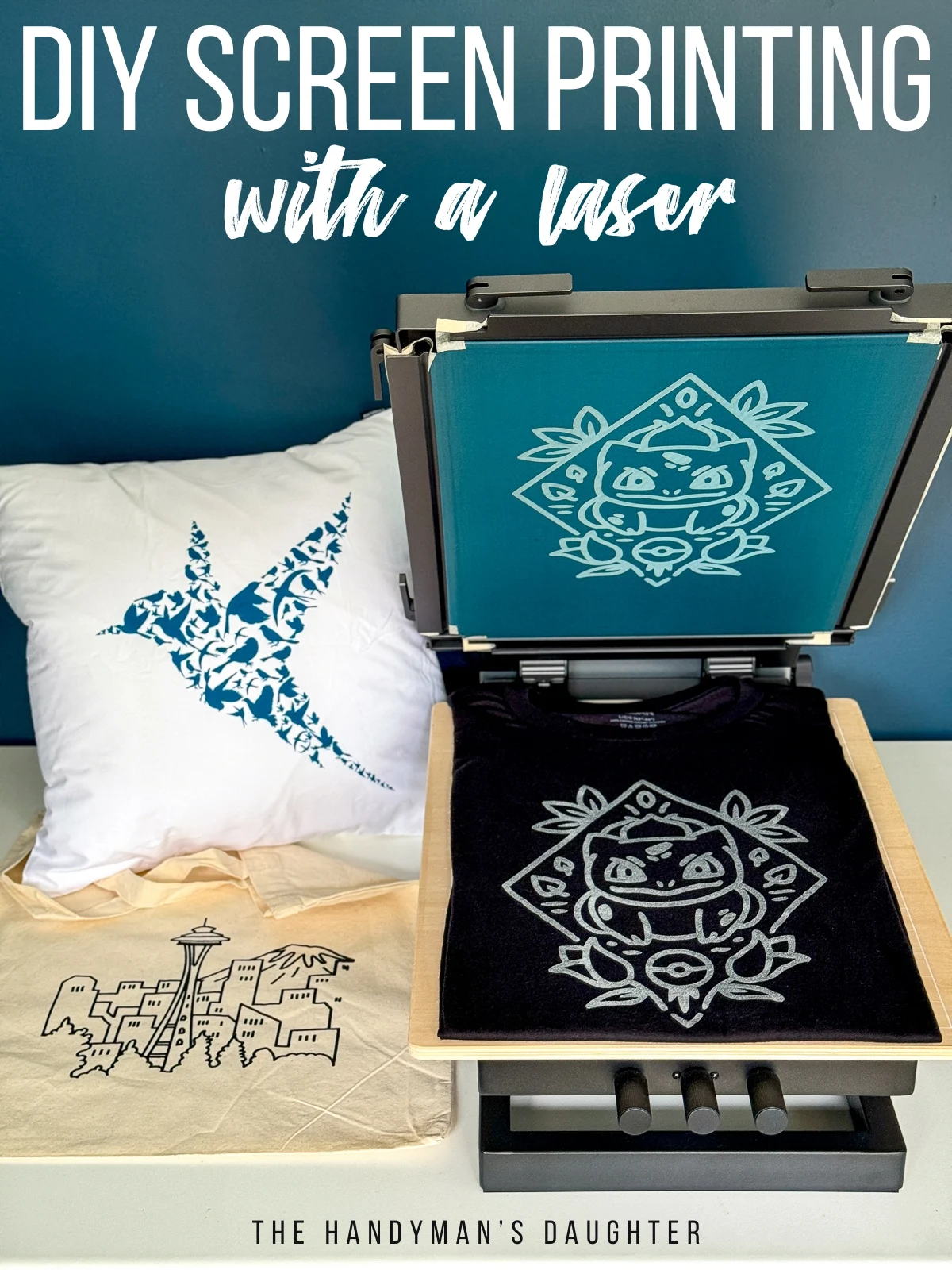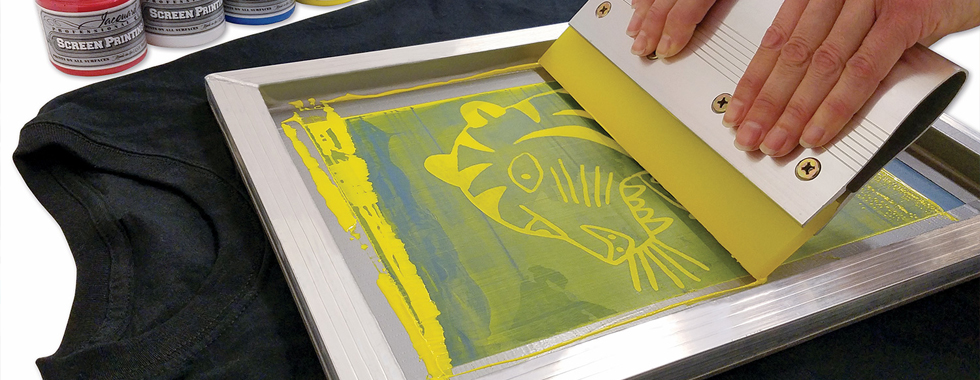Discover the Different Types of Screen Printing Techniques for Your Next Job
Screen printing uses a diverse variety of techniques that can improve any innovative project. From typical methods like serigraphy to modern-day developments such as direct-to-garment printing, each method has its special advantages. Specialty alternatives, consisting of environmentally friendly and metallic inks, present also more possibilities. Recognizing these methods can considerably influence the last result. However, the difficulty hinges on picking one of the most appropriate approach for particular needs and desired results. What elements should one think about?

The Basics of Screen Printing
Screen printing might appear facility, it is fundamentally an uncomplicated procedure that includes moving ink through a mesh screen onto different surfaces. The technique starts with the development of a pattern, which defines the layout to be printed. This stencil is affixed to a mesh screen, normally made of polyester or nylon. As soon as the pattern is in area, ink is applied to the screen and pushed via the mesh making use of a squeegee, causing the wanted pattern being printed on the underlying product.
Screen printing can be done on a large range of substratums, consisting of paper, fabric, and plastic, making it a versatile choice for numerous tasks. The procedure enables detailed layouts and vibrant shades, making it preferred in industries such as advertising and marketing, fashion, and art. Comprehending these essentials gears up individuals with the fundamental understanding required to discover advanced strategies in screen printing.
Conventional Screen Printing Techniques
Conventional screen printing strategies have been used for centuries, protecting the craftsmanship and virtuosity of this method. This method uses a mesh screen to move ink onto a substrate, such as fabric or paper, enabling resilient and lively designs. The procedure starts with producing a stencil, which obstructs certain areas of the screen to regulate where the ink will certainly be used.
One prominent technique is serigraphy, often made use of for imaginative prints and limited versions. Another is making use of water-based inks, which are eco-friendly and offer a soft feeling on textiles - 10:9 Design Texas. In addition, typical techniques can consist of hands-on printing, where craftsmens use ink with a squeegee, ensuring precision and interest to information
These techniques continue to be valued in the sector for their tactile high quality and the distinct structures they generate, attracting both customers and creators that appreciate the heritage of screen printing.
Digital Screen Printing Innovations
As the need for faster manufacturing and modification in the printing market has risen, electronic screen printing advancements have actually become a game-changer. This modern technology mixes conventional screen printing approaches with electronic processes, permitting quick prototyping and detailed layouts that were previously hard to accomplish. One significant improvement is the introduction of direct-to-garment (DTG) printing, which assists in high-quality, full-color prints on numerous textiles without the need for displays. Furthermore, developments in ink formulas have led to environment-friendly choices that maintain lively colors while reducing ecological effect. Making use of automated systems additionally improves manufacturing, lowering labor expenses and improving accuracy. These advancements not only satisfy little set orders and personalized styles yet additionally permit quicker turnaround times, making them suitable for services focused on meeting consumer needs in a hectic market. Digital screen printing, consequently, represents a necessary advancement in the domain of printing techniques.
Specialty Screen Printing Approaches
Checking out specialized screen printing approaches discloses a varied array of strategies that press the limits of creativity and performance in the printing sector. Among these, glow-in-the-dark inks give an one-of-a-kind visual impact, making styles come to life in low-light problems. Metallic inks, recognized for their shimmering finish, include a touch of luxury to published materials. An additional ingenious technique is discharge printing, which gets rid of dye from the fabric rather than including ink, leading to a soft, classic feel. High-density printing develops an increased structure on the surface, boosting tactile involvement. Furthermore, water-based inks are obtaining popularity for their vivid colors and lowered environmental impact. Each of these specialty strategies provides to particular layout needs, enabling brands and artists to create standout products that reverberate with their audiences. By leveraging these techniques, companies can boost their screen printing projects to new heights, making certain unforgettable impressions.
Eco-Friendly Screen Printing Options
Environment-friendly screen printing options are acquiring traction as the industry moves towards sustainability. Sustainable ink choices and making use of biodegradable products are key parts in lowering the environmental impact of the printing process. By taking on these techniques, screen printers can contribute to a much more lasting future while keeping high-quality results.
Sustainable Ink Choices

Biodegradable Materials Use
As the screen printing industry progresses, the incorporation of naturally degradable materials is becoming significantly important for environmentally aware methods. Manufacturers and designers are now exploring inks and substratums made from natural, renewable sources that decompose more efficiently than standard equivalents. These biodegradable choices reduce plastic waste and decrease environmental influence, straightening with the expanding need for sustainable products.
Typical examples consist of water-based inks and natural cotton textiles, both of which decrease damaging chemicals and promote eco-friendliness. Brands that embrace these products often boost their market appeal, bring in consumers that prioritize sustainability. As understanding of environmental problems remains to climb, the change towards biodegradable products in screen printing is likely to gain energy, fostering a greener industry criterion.
Choosing the Right Technique for Your Project
How can one identify one of the most appropriate screen printing technique for a certain task? The decision pivots on numerous variables, consisting of the product to be published on, the complexity of the style, and the wanted manufacturing quantity - 10:9 Design Screen Printing. As an example, direct-to-garment printing is ideal for detailed layouts with countless shades, while conventional screen printing stands out for bigger runs of easier graphics
Furthermore, factor to consider of the end-use of the printed thing is necessary. For outside applications, techniques that offer durability and weather condition resistance, such as plastisol ink, may be chosen. Conversely, environmentally-conscious projects may take advantage of water-based inks or biodegradable materials.
Ultimately, understanding the project's one-of-a-kind demands enables an educated option, making sure both visual charm and useful long life. By evaluating design intricacy, product compatibility, and production scale, one can properly pick the most proper screen printing method to meet their job's objectives.
Regularly Asked Questions
What Is the Background of Screen Printing?
Screen printing came from ancient China around 1000 ADVERTISEMENT, advancing via Japan and Europe. By the 20th century, it became prominent in industrial art and style, revolutionizing exactly how layouts were created and dispersed globally.

How Do I Prepare Art Work for Screen Printing?
To prepare artwork for screen printing, one have to guarantee high resolution, utilize an ideal color setting, develop separate layers for every shade, and convert message to describes, assuring compatibility with the printing procedure and desired result.
What Products Are Finest for Screen Printing?
The very best materials for screen printing include premium inks, resilient screens, and suitable substratums like cotton, polyester, or blends. Additionally, using appropriate solution and mops can enhance the printing procedure and results.
Can I Evaluate Publish at Home?
Yes, screen printing in the house is possible. With the right materials, configuration, and strategies, individuals can create high-grade prints. Nevertheless, careful factor to consider of workspace and equipment is vital for effective outcomes.

What Prevail Blunders in Screen Printing?
Usual errors in screen printing consist of inappropriate exposure times, insufficient ink uniformity, imbalance of displays, not enough cleansing of products, and overlooking to check prints. These errors can endanger the top quality and accuracy of the end product.
Screen printing might appear complex, it is basically a simple procedure that includes transferring ink with a mesh screen onto different surfaces. As the need for faster manufacturing and personalization in the printing market has surged, digital screen printing developments have emerged as a game-changer. Checking out specialty screen printing techniques discloses a varied selection of techniques that push the borders of creative thinking and functionality in the printing industry. The best materials for screen printing include high-quality inks, sturdy displays, and appropriate substrates like cotton, polyester, or blends (10:9 Design Screen Printing Texas). Common mistakes in screen printing include inappropriate direct exposure times, insufficient ink uniformity, misalignment of displays, inadequate cleaning of materials, and ignoring to test prints